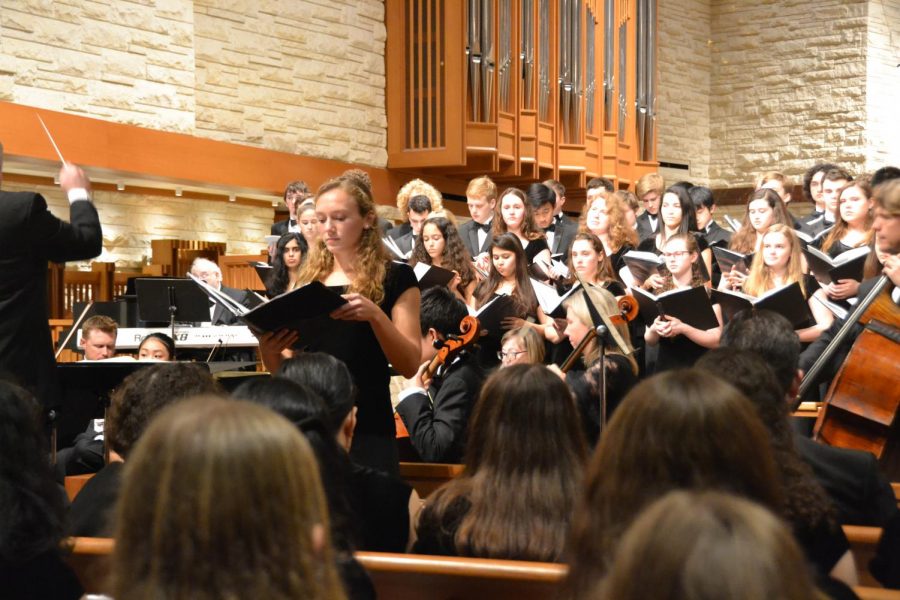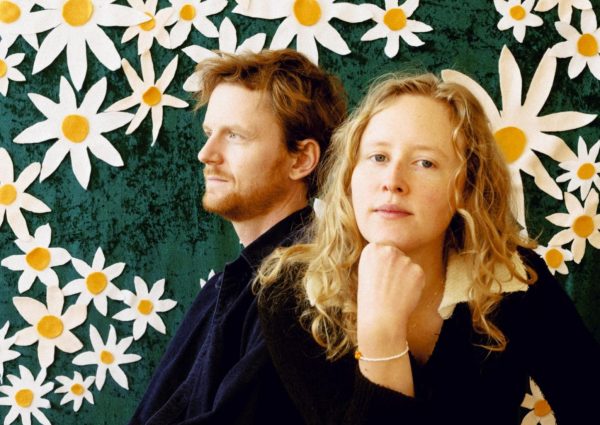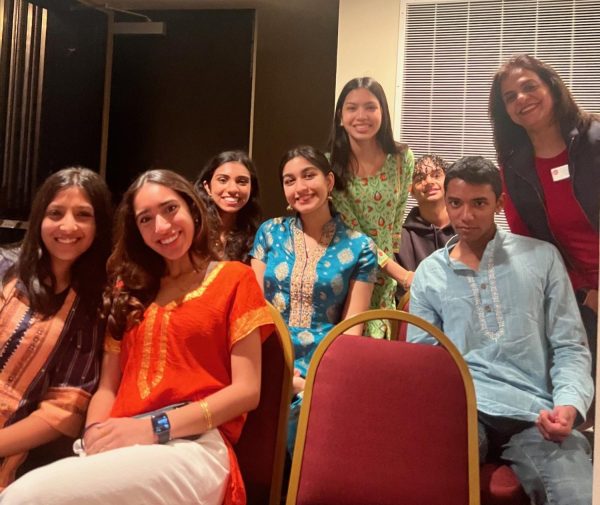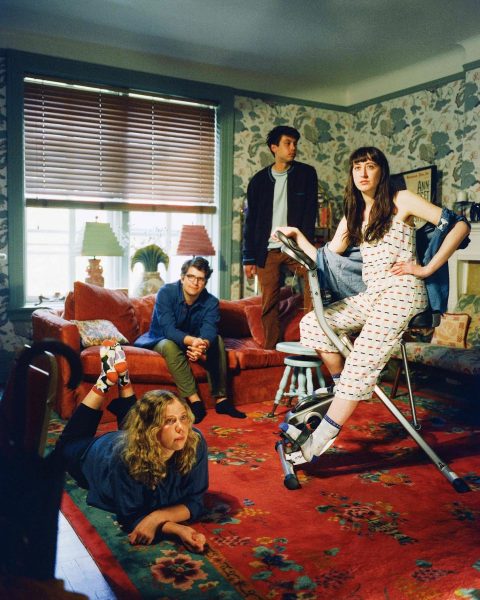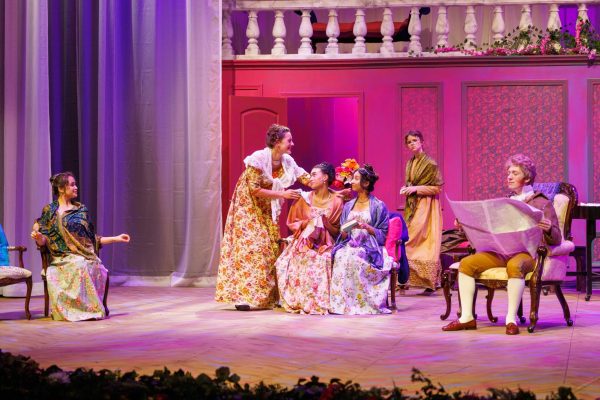Upper School ensembles perform in annual Choral-Orchestral Festival
Katina Christensen became the only person in St. John’s history to be admitted into TPSMEA Choral All State for all four years of Upper School on Nov. 9.
February 25, 2020
Although Chorales of years past have sung two or three movements of Antonio Vivaldi’s 29-minute, 12-movement “Gloria” at choral concerts, Scott Bonasso had never conducted a choir that performed the entire piece. In this year’s Choral-Orchestral Festival, Bonasso, the Director of Chorale and Kantorei, finally achieved his dream of doing so.
The annual Choral-Orchestral Festival, held on Feb. 10 at St. John the Divine, is unique from other choral and orchestral concerts during the year since it showcases the Upper School choirs and orchestras together.
“It’s enjoyable to have concerts where you can see how the choir program changes from Lower School all the way up,” Chorale president Claire Huff said. “This concert, however, is fun because it focuses on the Upper School and becomes specialized.”
Les Chanteuses kicked off the Festival with Pierre Passereau’s “Il est bel et bon” and Peter Niedmann’s “O God, My Heart Is Ready.” According to Les Chanteuses director Brendan Emig, the amount of available rehearsal time pressed the choir’s readiness for the concert—the choirs and orchestras had two fewer weeks to prepare for the Festival than other concerts.
To ensure that they would be ready for the Festival, singers practiced on their own to perfect the technical elements of their music, especially French vowel pronunciations in the “Il est bel et bon.”
“The student dedication and the willingness to meet the challenge of preparing such high-level music in a short period of time got us where we needed to be,” Emig said. “I was nervous about our preparation, but the singers showed that my worries were misplaced during the concert.
Pieces by Kantorei, Philharmonia, Chamber Strings and the combined orchestra followed Les Chanteuses. During Chamber Strings’s piece, Felix Mendelssohn’s “Sinfonia No. 3,” orchestra director Penny Meitz accompanied junior violist Tyler King, the only Chamber Strings violist. While playing viola, Meitz did not conduct the piece, so senior first-chair violinist Calista Smith led the orchestra.
“Figuring out how to lead the orchestra and to keep everyone together was challenging,” Smith said. “We focused on keeping a steady tempo and hitting the right notes at the right times.”
Each year’s festival culminates in Chorale’s performance of a cantata, an extended piece scored for both vocal and instrumental parts. According to Bonasso, performing a cantata instead of the usual three or four shorter pieces sung at other concerts allows the choir to “dive deeper and explore a longer, more extensive work of music.”
“The Festival gives us the opportunity to do things that we can’t do at a run-of-the-mill fall or spring concert, which result in a festive-type event,” Bonasso said. “Previously, we’ve combined with the orchestra, wind ensembles and brass groups.”
True to the Festival’s name, the cantata always combines Chorale and the orchestra. This year, Meitz, Smith, sophomore cellist James Wang and freshman violinist Emily Huang accompanied the choir in the “Gloria” along with several hired musicians.
“Although I was hesitant at first because the piece was extremely long and we had to learn the music on our own, I enjoyed playing in the quartet because the smaller group felt more selective and intimate,” Smith said. “It was an entirely different experience from the regular orchestra.”
Having only a few string players balanced the piece since the optimal orchestra player to choral member ratio is one to three. In fact, this configuration allowed the choir to be heard more effectively than in previous concerts.
“In other performances that combined the orchestra and choir, the orchestra and choir had the same number of members, so the choir was drowned out and the orchestra needed to play quietly,” Smith said. “Having a string quartet evenly balanced out the sound.”
Bonasso attributes Chorale’s ability to perform the entire “Gloria” to two factors: a larger boy-to-girl ratio than previous years and the ability of the soprano and alto sections to successfully utilize the structure.
“If there were ever a year for us to pull off the unbalanced pyramid-type ratio, where you have lighter parts on the top and heavier parts on the bottom, this would be it,” Bonasso said. “This set of junior girls singing the soprano and alto parts is incredibly gifted.”
Three of those junior girls — Katina Christensen, Jenny Green and Gabrielle Solymosy — sang solos, each comprising a movement of the cantata. All three soloists qualified for the all-state choir this year.
“Every soloist was a Les Chanteuses member last year, so I felt very proud to hear their solos,” Emig said.
According to Huff, the Festival was one of the most successful choral efforts she has experienced in her four years singing in Upper School choirs.
“Sometimes we don’t manage to completely pull off the intimidating finale pieces as well as we did this year,” she said. “Our successful performance is a testament to how hard we rehearsed to improve, and I’m most proud of that.”
To listen to the recordings from the Choral-Orchestral Festival, click here.



